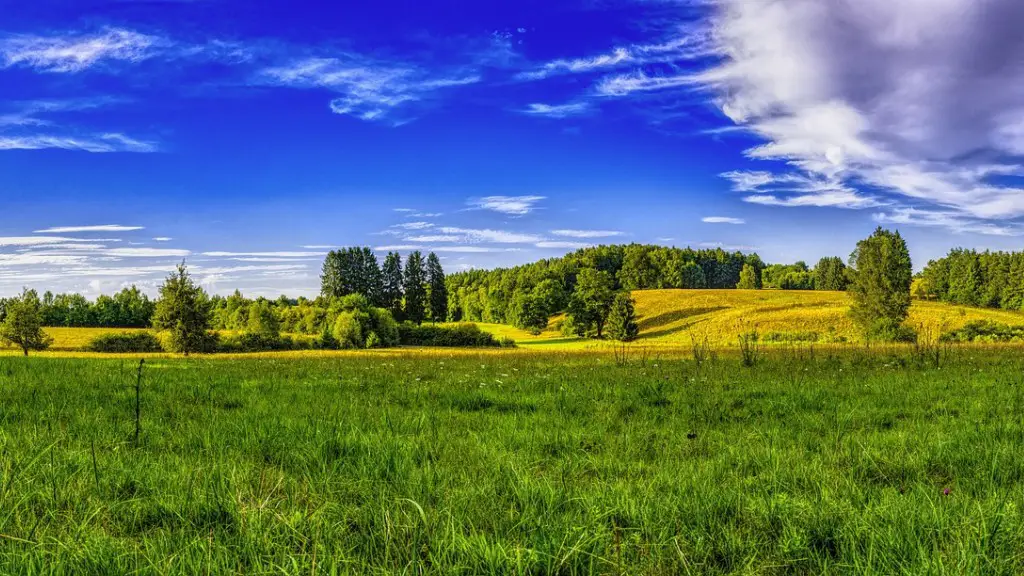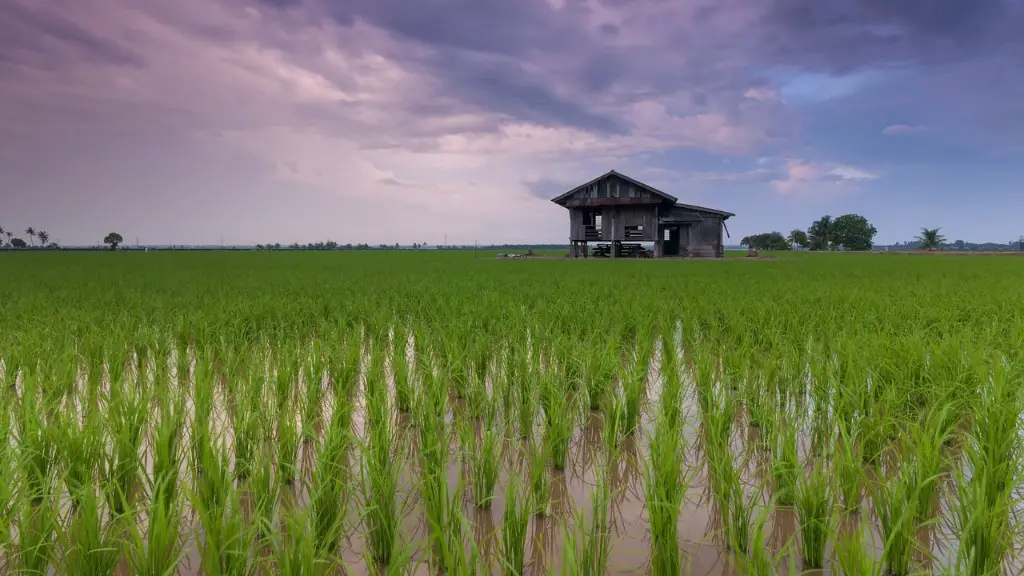Agriculture is an integral part of India’s economy and is the main source of food and nutrition to the country.Food security, livelihood security and environmental sustainability are some of the major challenges and priorities of the Indian agricultural sector. India is a land of diverse climates, soil types and crop patterns. This diversity is reflected in the myriad types of agriculture found in the country. In this article, we will discuss the different types of agriculture practiced in India,their characteristics and importance.
Irrigation and Dryland Farming
Irrigation based farming is one of the most widely practiced forms of agriculture in India.These farms are extensively cultivated with a range of crops such as rice, wheat, pulses and oilseeds, as well as vegetables and fruits. Irrigation is majorly undertaken by the Government of India for farmer welfare and food security. It is estimated that around 55-60% of the agricultural area in Indiais supplied with irrigation water from some form of a canal system, tube wells and borewells. On the other hand, dryland farming is practiced in areas that are not supplied with irrigation water. Farmers in dry land areas practice dryland farming through cultivation of rain-fed crops such as millets, bajra, jowar and cotton.
Organic Farming
Organic farming is another form of agriculture that is becoming increasingly popular.Organic farms are created with the intention of producing crops and food while preserving the natural environment. It involves the use of biological fertilizers, compost and other organic materials with the objective of maintaining the nutrient cycle of the soil while maintaining the balance between the soil and the atmosphere. Organic farming is eco-friendly and can play an important role in preserving the natural environment.
Agro-Forestry
Agro-forestry is a type of agriculture that involves the integration of trees and shrubs with crops, pastures and animals.It is a multi-functional system that combines soil conservation, biodiversity and conservation of natural resources. It is widely practiced in India in order to prevent soil erosion, conserve water and reduce the use of fertilizers and pesticides.Agro-forestry contributes significantly towards maintainingthe ecological balance.
Plantation Crops
The plantation crops are cultivated for commercial use and include spices, rubber, tea, coffee, oil palm, cashew nuts and other tropical fruits. These crops are generally found in the hilly or semi-arid regions of India and are widely used in the food and beverage industry. They have also recently gained popularity as they can be used in medical and pharmaceutical industries.
Fishery
Fishery is an important type of Indian agriculture. It comprises of activities related to the catching, farming, processing, marketing and consumption of aquatic organisms in fresh and saline environments. Fishery is the second-largest contributor to the fishery exports in India. It plays an important role in providing food and nutrition for the people, as well as providing livelihood opportunities for millions of Indians.
Animal Husbandry
Animal Husbandry is an important part of Indian agricultural sector. It involves the breeding and rearing of livestock and poultry for production, food and fibre. It plays an important role in improving the quality of life of millions of rural Indians by providing food, livelihood protection, nutrition and employment opportunities.
Agro-Industries
Agro-industries are small-scale industries that are primarily engaged in the processing and manufacturing of agricultural products.Agro-industries play an important role in increasing the value added products of Indian agriculture. They provide employment opportunities, contribute to the GDP, promote rural entrepreneurship and also provide an additional source of income for farmers.
Organic Pest Management
Organic pest management is a method of controlling pests such as insects, weeds and fungi in organic farming. It focuses on the use of natural predators, biological methods and natural chemicals to reduce pest damage to crops.It is a sustainable way of managing pests and diseases without the use of chemical pesticides which can have detrimental effects on the environment.
Vertical Farming
Vertical farming is a form of agriculture which involves the use of controlled environment technology for efficient and sustainable production of food. This form of farming utilizes limited space, and is mostly used in urban areas or areas where land is limited. It uses hydroponics and LED lights, and is beneficial as it reduces water usage, pesticide usage, and reduces the amount of time required for crop production.
Aquaponics
Aquaponics is a form of agriculture which combines traditional aquaculture and hydroponics. It involves the cultivation of aquatic animals and plants in the same aquaculture system, with the plants feeding off the water-borne nutrients from the fish waste. Aquaponics is a sustainable way to produce fish, as well as a variety of fresh and organic fruits and vegetables.
Conservation Agriculture
Conservation agriculture is a form of agriculture which focuses on using natural resources in an optimal and efficient manner. It involves the use of minimal tillage, integrated crop-livestock systems, soil conservation, pest and weed management and improved water utilization.The main aim of conservation agriculture is to reduce the environmental damage caused by traditional farming practices.


